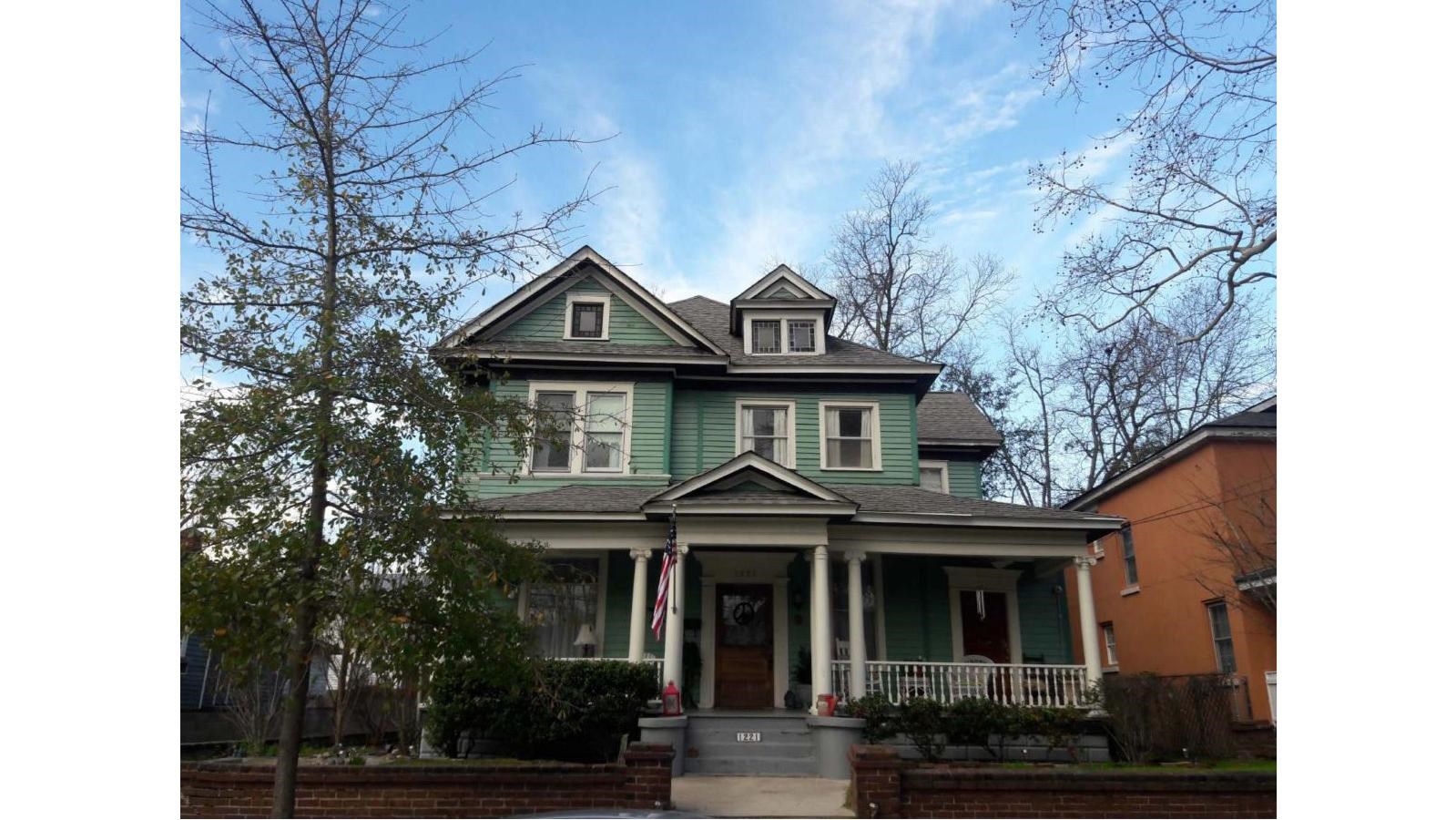Last updated: August 9, 2021
Place
Ruth's Beauty Parlor

Photograph by Carlie N. Todd, courtesy of South Carolina Historic Preservation Office
Quick Facts
Location:
1221 Pine St. Columbia, South Carolina
Significance:
Ethnic Heritage/Black, Social History
Designation:
Listed in the National Register – Reference number 100005638
OPEN TO PUBLIC:
No
MANAGED BY:
Private
Listed in the National Register of Historic Places in 2020, Ruth's Beauty Parlor in Columbia, South Carolina is significant for its association with Black beauty culture and entrepreneurship. From the late-1930s to 1943, the home was used by Ruth Collins Perry as a beauty parlor that served Waverly’s African American residents and Columbia’s broader Black community. The period of significance is based on the home’s listing in The Negro Motorist Green Book from 1939 to 1943. In 1989, the home was listed as a contributing property in the Waverly Historic District nomination alongside 136 other contributing buildings.
Waverly became a destination for Black families looking to settle near the city’s Black commercial and educational institutions. Waverly subsequently came to be home to a locally prominent class of African American community leaders, entrepreneurs, and activists, who found ways to prosper despite the prevailing social and political order of white supremacy. Among the Waverly residents who assumed positions of prominence in Jim Crow Columbia’s African American community was Nathaniel Hamilton Collins, who first owned and oversaw construction of the building which later housed the beauty parlor run by his daughter, Ruth Collins Perry. Nathaniel Collins was a successful tailor and had a substantial influence on the professional interests and careers of Ruth Collins Perry as well as her sister Etienne Collins, both of whom became involved with the clothing and fashion industry as seamstresses and designers. The interest and entrepreneurship that Ruth ultimately exhibited in opening her beauty parlor undoubtedly stemmed in part from the example set by her father, under whom she directly worked before opening her parlor.
While little documentation remains of the specific activities that unfolded at the parlor, it likely served a similar role for Black Columbians as did other beauty parlors and barber shops across the city and state. The parlor provided a valuable sanctuary from the aesthetic and cultural dictates of white society, and a space in which African Americans could freely converse and provide community support. Ruth’s Beauty Parlor is an example of a long historical effort among African American women to create spaces for cultural and aesthetic expression in a society where beauty norms were defined by white standards, and where public space was often divided into distinct “black” and “white” spheres. In many cases, beauty parlors also served as vital spaces for Black social activism, allowing African American women to discuss and strategize on the political issues of the day and empowering shop owners to become influential leaders in their own right. Black beauty culture was a key component in combating racism during Jim Crow segregation, because it empowered African American women to become independent entrepreneurs, free from the confines of white business owners. These women in turn provided spaces of community shelter and activism through their beauty salons and clothing shops.
Waverly became a destination for Black families looking to settle near the city’s Black commercial and educational institutions. Waverly subsequently came to be home to a locally prominent class of African American community leaders, entrepreneurs, and activists, who found ways to prosper despite the prevailing social and political order of white supremacy. Among the Waverly residents who assumed positions of prominence in Jim Crow Columbia’s African American community was Nathaniel Hamilton Collins, who first owned and oversaw construction of the building which later housed the beauty parlor run by his daughter, Ruth Collins Perry. Nathaniel Collins was a successful tailor and had a substantial influence on the professional interests and careers of Ruth Collins Perry as well as her sister Etienne Collins, both of whom became involved with the clothing and fashion industry as seamstresses and designers. The interest and entrepreneurship that Ruth ultimately exhibited in opening her beauty parlor undoubtedly stemmed in part from the example set by her father, under whom she directly worked before opening her parlor.
While little documentation remains of the specific activities that unfolded at the parlor, it likely served a similar role for Black Columbians as did other beauty parlors and barber shops across the city and state. The parlor provided a valuable sanctuary from the aesthetic and cultural dictates of white society, and a space in which African Americans could freely converse and provide community support. Ruth’s Beauty Parlor is an example of a long historical effort among African American women to create spaces for cultural and aesthetic expression in a society where beauty norms were defined by white standards, and where public space was often divided into distinct “black” and “white” spheres. In many cases, beauty parlors also served as vital spaces for Black social activism, allowing African American women to discuss and strategize on the political issues of the day and empowering shop owners to become influential leaders in their own right. Black beauty culture was a key component in combating racism during Jim Crow segregation, because it empowered African American women to become independent entrepreneurs, free from the confines of white business owners. These women in turn provided spaces of community shelter and activism through their beauty salons and clothing shops.
